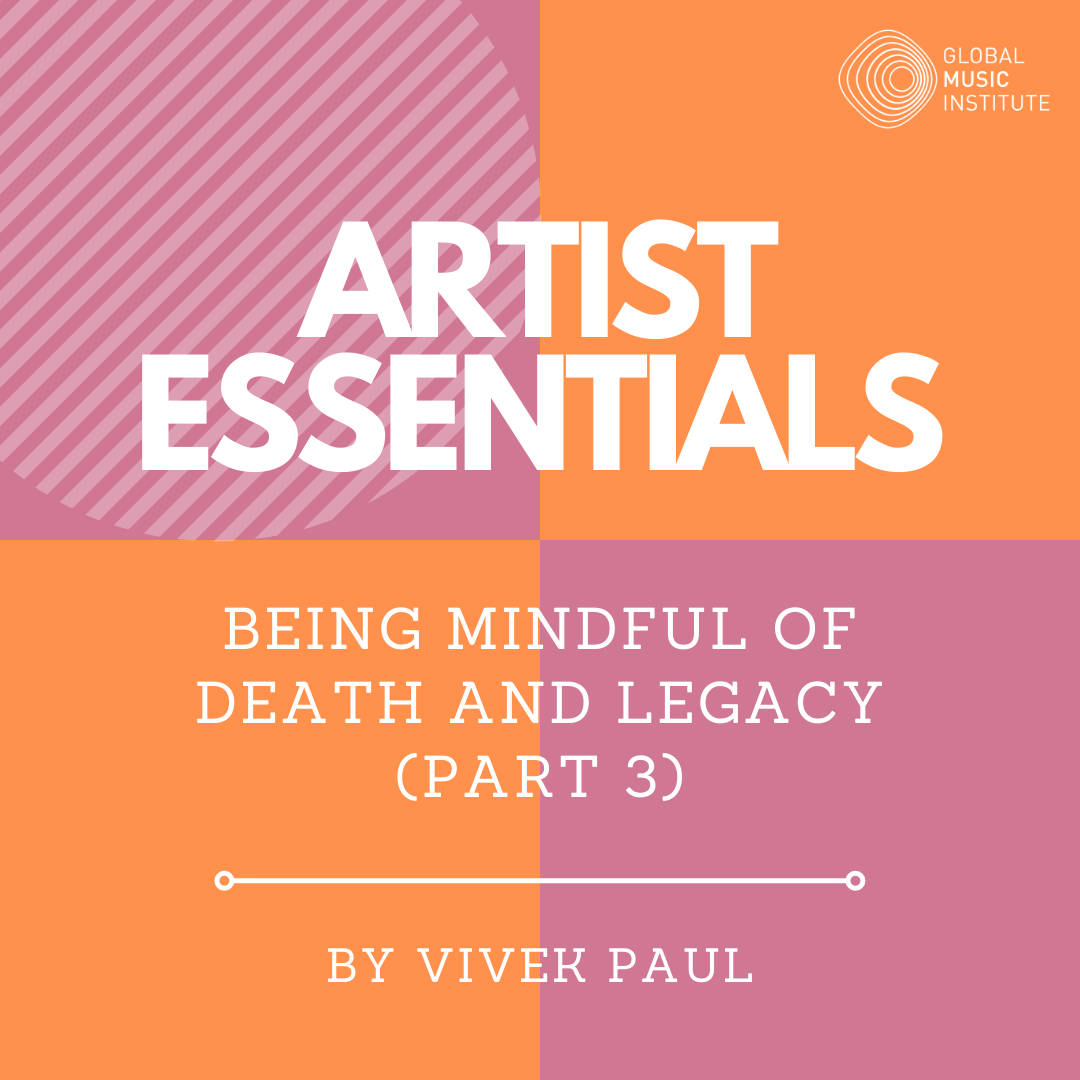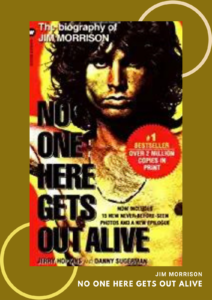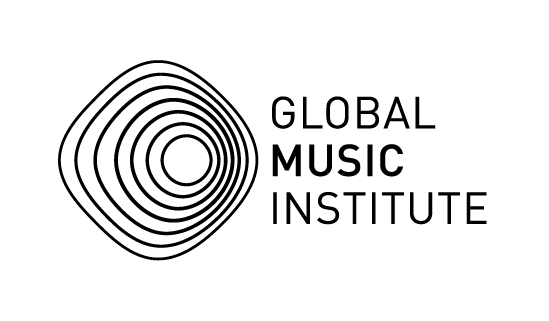
17 Mar Artist Essentials | Being Mindful of Death and Legacy (Part III) by Vivek Paul
At GMI, we try to bring to you the best of the industry voices. Today, we have a piece by Vivek Paul, founder of Gatsvy Consulting. This is the final part of a three part series of blogs.
In the music industry there are two exciting times and high points for the investors and artists. One occurs when the artist breaks into the big league and commercial success takes place. The second is the death of the artist, which spikes the catalogue sales and invokes inheritance. Is death the beginning or an end? Is death an instrument of success for creative artists? Is death a moment of mourning or celebration? Why do record labels celebrate the death of an artist? Why does death create value for creative works? Why do artists die in poverty but their creativity is valued after their life? Is it fair to monetise the death of an artist almost instantaneously? Should there be a cool off period before the monetisation happens? Where is the period of Tribute by Fans? Is it exploitation of fan emotions that monetary gains are linked to a demise? There are many questions which need to be answered but there are very few who would want to explore this angle. It is observed that biases and monetary gains take control of certain narratives.
‘Death Stops the Creative Process of Creating New Music, but not the Avenues of Monetisation – in fact, it begins the Cycle of Legacy’. This is perhaps one of the most important things in the copyright business. The copyright works continue to create monitisable value for the dependents of the artist.
In the last two decades the value creation done by the artistic works and their benefits have come to surface in multiple domains. In social digital conversations, this topic became pertinent when companies like Facebook with a very large population exchanging life events, had to address questions about anxiety and emotional stress caused by memories of gone people.While digital media had to take notice and build mechanisms around removing accounts of people who completed their life journey, the challenge to put an expiry date on a human life in a digital account became a big issue to address.
Music business has been dealing with such issues in parallel since its inception. Couple of successful artists’ stories started to create public debates as the media started to expand its footprint and debates became three way between the reporters, analysts and consumers. While there was the birth of speculative media in the creative business, areas of concern started to emerge as the debates went public, especially in the case of Tupac, Michael Jackson, Amy Winehouse, Kurt Cobain, Munshi Premchand and many more. The concept of Funeral Jazz Bands that came about in recent years integrated celebration of life, introducing a new revenue stream for the artists. Wiz Khalifa’s track ‘See You Again’ became a monster hit as a tribute track for Paul Walker. It hit billions of views on YouTube and is by far, one of the highest liked digital videos (> 35MN Likes and 0 Dislikes) on the platform.
With the starting point of 2022, the artist should start to think about legacy and inheritance, the two critical pieces of their life’s work. This intertwines with Metaverse by Facebook, Microsoft and many more. A strong reason is that the concept of ‘avatars and second life’ is going to engage a lot of artistic intellect. Digital Legacy, Digital Intellect, Digital WIll, Copyrights protection which can go three generations down, needs protective measures, when within the lifetime of the artists, 2020 Pandemic created a big trigger for this aspect for the creators putting a spotlight on : substantial income drop, inheritance issues and mental health challenges. Such issues go deeper in an event in case the musician is not mentally stable, creating transferable rights becomes an issue in legacy, inheritance and ownership.
 The case of Prince and his legacy is a great thesis to look at. He made all the protective moves for his copyrights which included his ‘ reputation and digital shifts in the industry over time, especially after his human life’. One of the big things he did through his protective mechanism was ‘digital hold-outs’ after his life. Which eliminated a lot of speculative information in the media and there are very few videos and digital assets around the same. Tupac and Snoop Dogg at Coachella is another great example of how the holographic rights were exposed after the life of Tupac. The Digital Laws which are evolving to protect such instances, the artist need to be proactive in creating Post-Mortem Rights. The big areas to focus on should be:
The case of Prince and his legacy is a great thesis to look at. He made all the protective moves for his copyrights which included his ‘ reputation and digital shifts in the industry over time, especially after his human life’. One of the big things he did through his protective mechanism was ‘digital hold-outs’ after his life. Which eliminated a lot of speculative information in the media and there are very few videos and digital assets around the same. Tupac and Snoop Dogg at Coachella is another great example of how the holographic rights were exposed after the life of Tupac. The Digital Laws which are evolving to protect such instances, the artist need to be proactive in creating Post-Mortem Rights. The big areas to focus on should be:
- Who will own the digital rights like social media, email passwords and digital legacy?
- How will the copyrights be transferred after the life of the artist as they will still be active for monetisation and licensing?
- Does a will created by the artist that comprises digital inheritance exist?
- If the artist has sole proprietorship structure, then how will the disputes resolve or who will take the onus of post life challenges?
- What happens to the unregistered works, collaborations and work done on human trust and remains in public domain without any contractual understanding?
- How is the legacy of the artist being protected and who will be the future beneficiaries?
Legacy of the artists begins within their lifetime and it is very difficult to settle disputes or chaos if there is no plan created by the artist in their lifetime. Copyrights are one part of the value creation process, other aspects are who would possess instruments, cover notes, voice notes, unfinished objects, awards, recognitions, imagery content, brands & trademarks, patents etc. ‘Artist Legacies’ is a business model in itself.
In 2019, a publication highlighted how the Minnesota musicians are protecting their legacy and creating the pathway post life. Chris Osgood, punk rocker trio at Suicide Commandos has valuable thoughts his legacy – ‘Artist like me forget a lot about what all our assets in all in terms of physical and copyrights. So while planning about death and its aftereffects, intellectual property is a key ingredient in the ‘Will Creation Process’. Many like minded artists have gone to the extent of even protecting namelikeliness and credits for future works to the fellow musicians, colleagues and partners. While some parts of the artistic works do not continue like live performances or appearances or meet and greet with the fans, but, copyrights continue to create value through transactions and licensing. Autobiographies, BTS and intellectual capital of the artist are many other areas to shield.
Thus, if there is one thing pandemics have taught all of humanity and especially the artists is ‘Reboot and Restart’. Don’t short change yourself with any excuses to neglect the above areas for your own credibility and legacy. Death, Life Vulnerabilities, Financial Crisis, Upskilling, Mental Health, Joblessness, Radical technological changes were some of the all time high focus areas for every creative individual as markets evolve and advance towards the next decade.
Vivek Paul is the Founder of Gatsvy Consulting and has studied at Stanford University, and Berklee College of Music. With over two decades in the entertainment industry, he has contributed towards product design, content innovations, M & A’s, nurturing early stage startups, and serving the board of not-for-profit ventures. His life is devoted to building innovative products for businesses rooted in ethics. His methods combine intellectual capital, creativity, and humanity.



No Comments